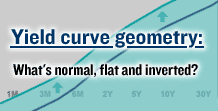|
10-year Treasury yield seen hitting 5%
It took more than a year but long-term bond market rates are finally rising. The question now is how far will they go.
NEW YORK (CNNMoney.com) - The tide is finally shifting in the bond market, where long-term interest rates have been rising, and one of the world's most widely watched rates could top 5 percent soon. The question for millions of investors then becomes how high the yield on the 10-year Treasury note will eventually go.
The rise in long-term rates is important since it can draw billions of dollars into the bond market as money managers chase yield. But it's also a big deal for everyone else since a variety of corporate and mortgage loans are pegged to rates in the bond market. The reason for the recent runup in long-term bond yields? Bond market investors have grown more worried about inflation in recent weeks -- with oil prices back near record highs and first-quarter economic growth expected to rock -- but they're also worried about how high the Federal Reserve will raise interest rates. "There's concern over how much (more) the Fed is going to tighten," said Mary Ann Hurley, vice president of fixed-income trading at D.A. Davidson in Seattle. For most of the last 21 months that the Fed's been raising short-term rates, long rates in the bond market barely budged. Bond rates are determined by investors while the Fed controls its key short-term rate, an overnight bank lending rate called the fed funds rate. As recently as a month ago, the 10-year Treasury yield stood at 4.63 percent, just a hair above where it was when the Fed started raising the fed funds rate in June 2004. Short-term rates in the bond market, by contrast, rose much more sharply than long rates. The yield on the two-year note, for example, jumped about two full points over that period. The fact that long-term bond rates stayed so low for so long led former Fed Chairman Alan Greenspan to call that situation a "conundrum" last year. But the recent sell-off in the bond market has boosted long bond yields to their highest level in nearly four years. The yield on the benchmark 10-year note hit 4.905 percent Monday, the highest since June 2002, according to Reuters. And while yields have backed off a bit, many bond experts say the 10-year yield could very well hit 5 percent in the coming weeks as investors refocus on where the fed funds rate might end up. It is true that long-term bond yields started creeping up in February. But they took off last week after the Fed raised its target for the fed funds rate another quarter point to 4.75 percent -- and left the door open for another hike in May. "The 10-year has been trying to anticipate the fed funds rate. As soon as (Fed policy-makers) made it clear that they weren't going to stop at 4.75 percent, there was a big jump," said Marc Pado, U.S. market strategist at Cantor Fitzgerald, one of the world's biggest bond-trading firms. Bond party over?
And while the 10-year yield could top 5 percent soon, it remains unclear how much the rate might rise beyond that. Several factors that had been keeping long bond yields stubbornly low remain in play. Pension funds are always buying Treasury securities, and overseas demand for U.S. government bonds remains healthy. And most analysts aren't expecting a huge bond market sell-off that would drive yields through the roof anytime soon. Bond prices and yields move in opposite directions. But some analysts say that as economic growth picks up in Europe and Japan, where higher rates are on the way, that could make U.S. assets less attractive. "If global investors lose their appetite for dollar assets, you could see a sharp decline in the dollar (and bond prices) and a rise in bond yields," said Paul Kasriel, chief economist at global investment firm Northern Trust. Return to normalcy?
Even with the recent runup in long-bond yields, they're still barely higher than short-term yields, and the so-called yield curve remains relatively flat, which in the past has been a sign of slower economic growth ahead. (Yield curve 101. Click here.) At the end of last year, long rates fell below short rates in the Treasury market for the first time in nearly five years -- an inversion of the yield curve that raised eyebrows in financial markets: An inverted curve has preceded the past two recessions. So is the rise in long-term rates worrisome? Maybe, but maybe not, since some analysts say the yield curve isn't as reliable an indictor as it once was (Full story). For the yield curve to return to normal, there would need to be a surprise jump in inflation, which would boost long-term rates further, or a sign that the Fed is ready to take its foot off the brakes, which would lessen upward pressure on short rates, said Kim Rupert, fixed-income analyst at Action Economics. As things stand, it isn't clear which of those might come first. The Fed said in its last policy statement that it was concerned about energy costs and a tight labor market sparking higher inflation. But so far the economy has been able to keep growing without a jump in inflation. Still, there's no doubt the economy has picked up a significant head of steam after a fourth-quarter slowdown. A number of economists see growth of 4 to 5 percent in the first quarter, and some say the Fed could overshoot and raise rates too far, possibly slowing economic growth, which is expected to slow gradually anyway as the year wears on. --------------------------
For the latest bond prices and yields, click here. |
|



